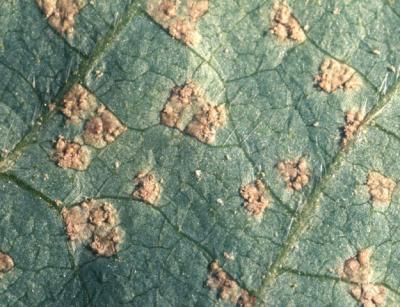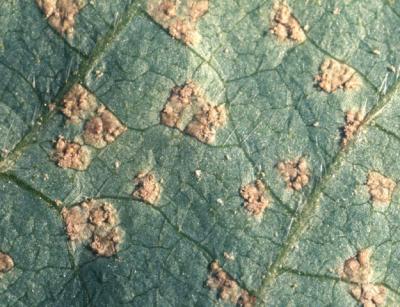

Soybean rust (Phakopsora pachyrhizi)
The most common symptoms are grey green, tan to dark brown or reddish brown lesions particularly on the undersides of the leaflets. These lesions are called uredia and they contain spores of the fungus. The spores from uredia are called urediniospores. Lesions tend to be angular, are restricted by leaf veins, and reach 2-5 mm in diameter. Lesions may also appear on petioles, pods, and stems. With time uredia turn black and at this stage they are called telia and the spores they contain are called teliaspores.
Lesions are frequently associated with leaf chlorosis, and high lesion densities result in premature defoliation and early maturity. During the early stages of development before the onset of sporulation, rust lesions may be confused with bacterial pustules (see bacterial pustule/bean blight). However, the symptoms of the two diseases can be differentiated by the presence of multiple uredia in the rust lesion and by the irregular cracks that usually appear in host tissue with a bacterial pustule lesion. Rust epidemics are most severe during long periods of leaf wetness when the mean daily temperature is less than 28 degC. Urediniospores are the primary means of disease spread.
Soybean is susceptible at any stage of development, but symptoms usually appear from the middle to late in the season because a prolonged wet, cool period is required for infection and sporulation. Spread of urediniospores is by windblown rain. The pathogen is not seed-borne in soybean. Rust can reduce yield by as much as 90%.
- Plant resistant varieties, if available.
